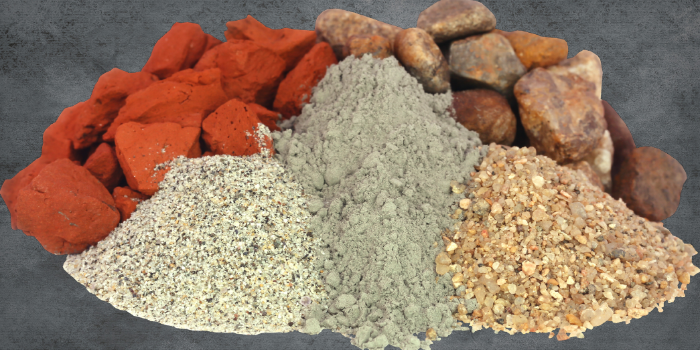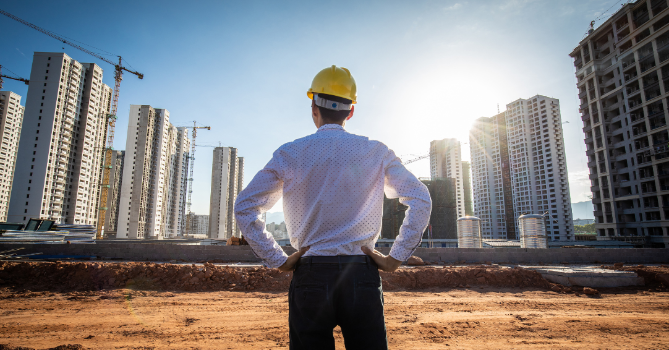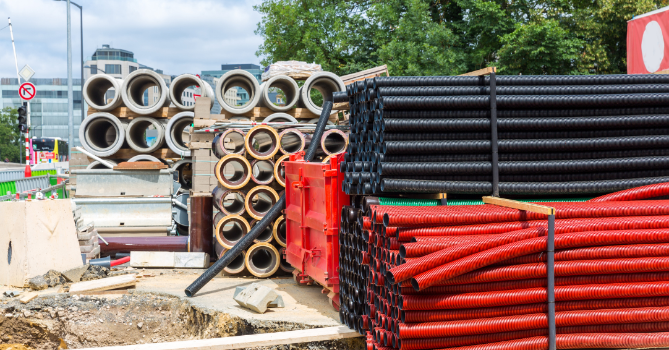
Shaping Tomorrow: The Role of Materials in Industry
Hey there! Ever wonder how the stuff we build with is changing the game? Well, get ready because we're diving into the fascinating world of materials and how they're shaping our industries. From construction to architecture, materials are like the unsung heroes making it all happen.
Think about it: every building, every bridge, every structure starts with materials. But it's not just about bricks and mortar anymore. We're talking about cutting-edge stuff like self-healing concrete and futuristic smart materials. And guess what? It's not just about making things look cool (although they definitely do). It's about making them last longer, work better, and even help the planet.
So, buckle up and join us on this journey as we explore how materials are changing the game and paving the way for a brighter future in our industries. Let's dive in!
Let's talk about self-healing concrete. You know how annoying cracks can be in concrete? Well, imagine if concrete could fix itself. Crazy, right? That's exactly what self-healing concrete does.
Basically, when cracks start to form, special ingredients in the concrete kick into gear. They react with water and air to fill in those cracks, just like our bodies heal cuts. It's like magic, but with science.
And get this: self-healing concrete isn't just some far-off dream. It's already being used in real-world projects. Think bridges, tunnels, even buildings. It's making them stronger and more durable, which means less maintenance and fewer headaches for everyone involved.
Plus, it's not just about fixing cracks. Self-healing concrete can also help with things like preventing corrosion of steel reinforcements, which is a big deal for the long-term health of structures.
So, next time you're walking over a bridge or driving through a tunnel, remember that it might be made with self-healing concrete. It's like having a superhero working silently in the background, making sure everything stays solid and safe.

Architectural materials are evolving, and it's not just about bricks and mortar anymore. We're talking about some seriously cool stuff here.
First up, smart materials. These are like the superheroes of the material world. They can change their properties in response to external conditions. Picture a building that can adjust its temperature or lighting depending on the weather outside. That's the power of smart materials.
Then there are sustainable alternatives. With climate change on everyone's minds, architects are turning to materials that are kinder to the planet. Think recycled materials, natural fibers, and even things like bamboo and cork. It's all about building smarter and greener.
And let's not forget about aesthetics. New materials are giving architects more creative freedom than ever before. From translucent concrete to 3D-printed structures, the possibilities are endless.
But it's not just about looks. These materials are also designed to be more durable and efficient, saving time and money in the long run.
So, what does this mean for the future of architecture? Well, it means we're in for some pretty exciting times. Buildings will be smarter, greener, and more beautiful than ever before. And it's all thanks to these innovative materials that are pushing the boundaries of what's possible.
Sustainability is all about building for the long haul - not just for us, but for the planet too. And that's where materials come in.
First off, using eco-friendly materials is a big part of the puzzle. We're talking about stuff like recycled steel, reclaimed wood, and low-impact concrete. These materials not only reduce waste but also cut down on carbon emissions during production.

But it's not just about what materials we use; it's also about how we use them. Sustainable construction is all about maximizing efficiency and minimizing waste. That means using materials wisely, designing for durability, and recycling whenever possible.
And let's not forget about energy efficiency. The materials we use can have a big impact on a building's energy consumption. That's why things like high-performance insulation and energy-efficient windows are becoming more and more common.
But here's the really cool part: sustainable construction isn't just good for the planet - it's also good for the bottom line. Sure, it might cost a bit more upfront to use eco-friendly materials and design strategies. But in the long run, it can actually save a ton of money on things like energy bills and maintenance costs.
So, whether you're building a new home, a commercial building, or a massive skyscraper, think about the materials you're using. Because when it comes to sustainable construction, every little bit counts. And together, we can build a better, greener future for generations to come.
As technology continues to advance, we can expect to see even more innovation in the world of materials. From self-healing concrete to smart glass that can adjust its tint, the possibilities are endless.
But it's not just about fancy new materials. It's also about how we use them. As sustainability becomes a bigger priority, we'll likely see a shift towards greener, more eco-friendly building practices. That means more recycled materials, more energy-efficient designs, and more emphasis on durability and longevity.
And let's not forget about the role of materials in addressing some of the biggest challenges facing our industries. From climate change to population growth, we'll need innovative materials to help us build a more resilient and sustainable future.
But here's the thing: none of this is going to happen overnight. It's going to take time, effort, and collaboration from all corners of the industry. But if we're willing to roll up our sleeves and embrace the possibilities, the future looks bright.
So, whether you're an architect, a builder, or just someone who cares about the world we live in, keep an eye on materials. Because they're not just the building blocks of our industries - they're the key to unlocking a better, brighter future for all of us.
In conclusion, the journey through the world of materials has been nothing short of inspiring. From self-healing concrete to sustainable alternatives and smart materials, it's clear that the future of our industries is filled with innovation and possibility.
As we look ahead, it's crucial to remember the transformative power of materials in shaping our built environment. By embracing sustainable practices and leveraging cutting-edge technologies, we can create structures that not only stand the test of time but also contribute to a healthier planet.
So, whether you're an architect, a builder, or simply someone who cares about the world we live in, let's continue to push the boundaries of what's possible. Together, we can build a future where materials not only support our needs but also inspire generations to come. Let's make it happen.